![]()
![]()
![]()
Use LEFT and RIGHT arrow keys to navigate between flashcards;
Use UP and DOWN arrow keys to flip the card;
H to show hint;
A reads text to speech;
65 Cards in this Set
- Front
- Back
|
What Yeast shows + germ tube test |
Candida albicans; all others are negative |
|
|
What colors are: C. albicans, glabrata and kruzei on CHROM agar? |
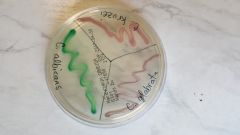
|
|
|
What colors are C. tropicalis, Trichosporon beigelli, Cryptococcus neoformans on CHROM agar? |
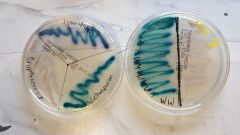
|
|
|
How are Zygomycetes classified? |
Broad hyphae which are mainly nonseptate |
|
|
Zygomycetes produce structures called _________ which have an asexual structure called a __________ that produce _____________. |
Zygomycetes produce structures called sporangiophores which have an asexual structure called a sporangium that produce sporangiospores |
|
|
Name the 3 Zygomycetes fungi. |
1) Rhizopus sp. 2)Mucor sp. 3) Cunninghamella sp. |
|
|
Name 6 Hyaline fungi. |
1)Aspergillus niger 2)Aspergillus flavus 3)Aspergillus clavatus 4)penicillium spp 5)Fusarium spp 6)Scopulariopsis spp |
|
|
How are Hyaline fungi different from Zygomycetes fungi? |
Hyaline fungi have clear septate hyphae and Zygomycetes does not. |
|
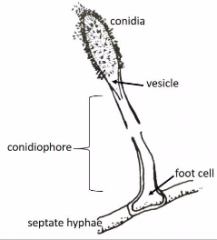
|
Aspergillus clavatus |
|
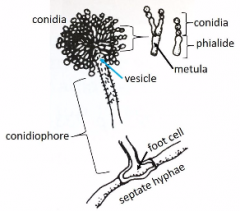
|
Aspergillus flavus |
|
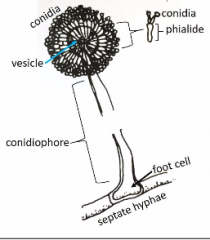
|
Aspergillus niger |
|
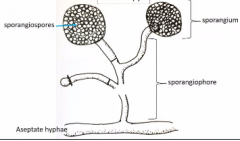
|
Mucor spp |
|
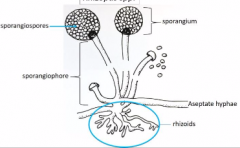
|
Rhizopus spp. |
|

|
Cunninghamella spp. |
|
|
What are dermatiaceous fungi? |
organisms that produce dark colonies due to pigmentation on their cell walls |
|
|
Chromoblastomycosis is a dermatiaceous disease that causes what? |
Chronic infection, forms schlerotic bodies. Cutaneous and subcutanous locations, however can spread to CNS, lungs and muscle |
|
|
Phaehyphomycosis is a dermatiaceous disease that causes what? |
cutaneous, subcutaneous or systemic infections |
|
|
Mycetoma is a dermatiaceous disease that causes what? |
Chronic, tumor-like lesions that are generally on hands/feet |
|
|
How do dermatiaceous fungi enter the body? |
Usually by traumatic implantation from environment to tissue |
|
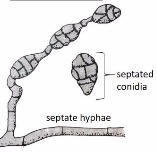
|
Alternaria spp. Causes: phaeohyphomycosis |
|
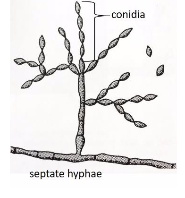
|
Cladosporium Causes: chromoblastomycosis Found in Australia, Venezuala and S. Africa |
|
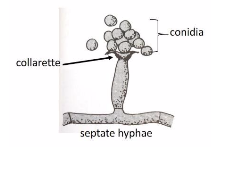
|
Phiolophora spp. Causes: Chromoblastomycosis Found in N. America Rarely causes phaeohyphomycosis and mycetoma |
|
|
Name 3 dermatiacious fungi |
1)Alternaria spp. 2)Phiolophora spp. 3)Cladosporium spp. |
|
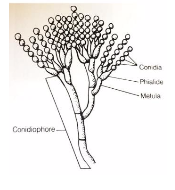
|
Penicillium spp. Causes: keratitis, UTI, respiratory and ear infections |
|

|
Fusarium spp. Causes: Mycotic eye infections, Mycetoma, sinusitis, skin and nail infections |
|
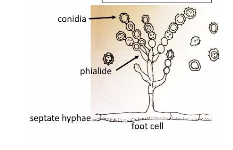
|
Scopulariopsis spp. Causes: tonail infections |
|
|
What are the characteristics of the Dermatophyte fungi? |
Dermatophytes are filamentous. They do not penetrate the skin, but grow by digesting the keratinized layor of the outside skin. |
|
|
What are the 3 genera of dermatophytes? |
1)Epidermophyton (no microconidia)(NOT IN LAB) 2)Microsporum (microconidia) 3)Trichophyton (microconidia) |
|
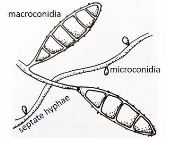
|
Microsporum gypseum Causes: ringworm in chickens, rarely in human scalp |
|
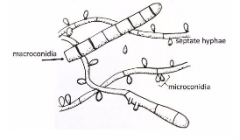
|
Trichophyton rubrum Causes: Most common dermatophyte to infect human skin and nails |
|
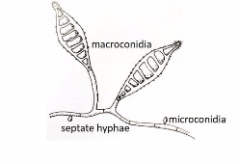
|
Microsporum canis Causes: infection of the scalp and skin in children and dogs/cats |
|
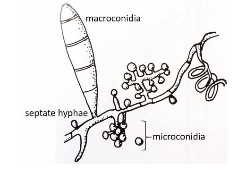
|
Trichophyton mentagrophytes Causes:Invades all parts of the body, common cause of athletes foot |
|
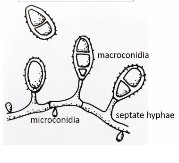
|
Microsporum nanum Causes: ringworm in pigs and rarely humans |
|

|
Mucor spp. (zygomycete) |
|
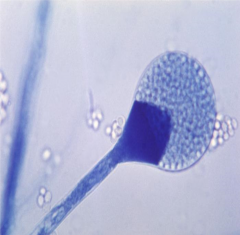
|
Mucor Spp. (Zygomycete) |
|
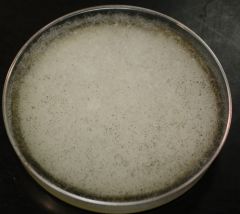
|
Rhizopus spp. (zygomycete) |
|
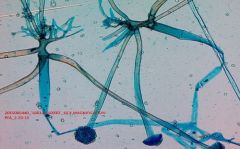
|
Rhizopus sp. (Zygomycete) |
|
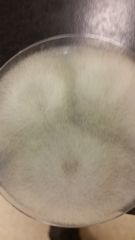
|
Cuninghamella spp. (zygomycete) |
|
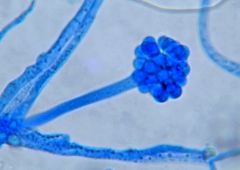
|
Cuninghamella spp. (zygomycete) |
|
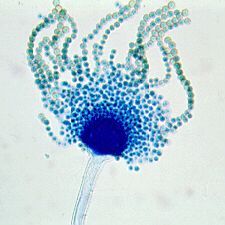
|
Aspergillus flavus |
|
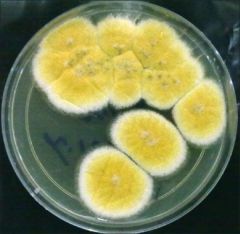
|
Aspergillus flavus |
|
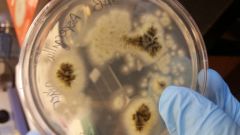
|
Aspergillus niger |
|
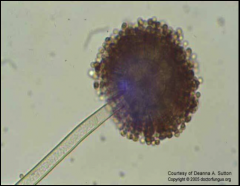
|
Aspergillus niger (Hyaline) |
|
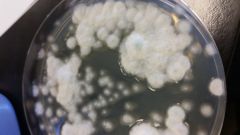
|
Aspergillus clavatus (Hyaline) |
|
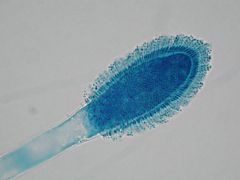
|
Aspergillus clavatus (Hyaline) |
|

|
Alternaria (Dematiaceous) |
|
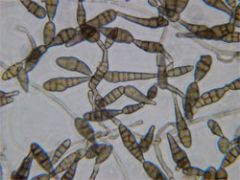
|
Alternaria (Dematiaceous) |
|
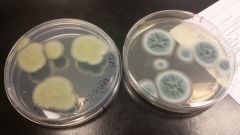
|
Penicillium spp. (Hyaline) |
|
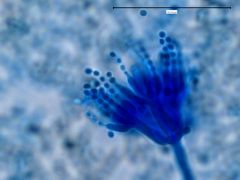
|
Penicillium (Hyaline) |
|
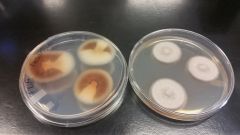
|
Fusarium spp. (Hyaline) |
|
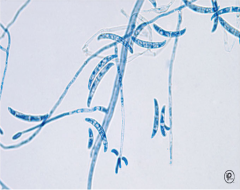
|
Fusarium spp. (Hyaline) |
|
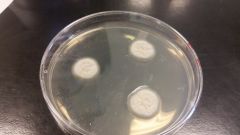
|
Scapulariopsis spp. (Hyaline) |
|
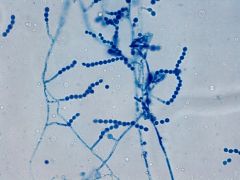
|
Scapulariopsis spp. (Hyaline) |
|
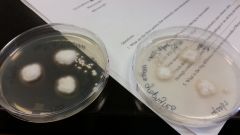
|
Trichophyton mentagrophytes (dermatophyte) |
|
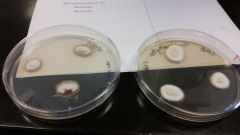
|
Trichophyton rubrum (dermatophyte) |
|
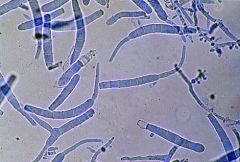
|
Trichophyton rubrum (dermatophyte) |
|

|
Microsporum gypseum (dermatophyte) |
|
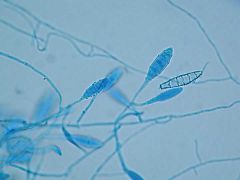
|
Microsporon gypseum (dermatophyte) |
|
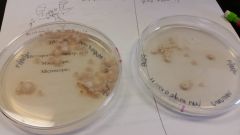
|
Microsporum nanum (dermatophyte) |
|

|
Microsporum nanum (dermatophyte) |
|
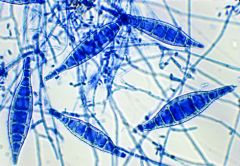
|
Microsporum canis (dermatophyte) |
|
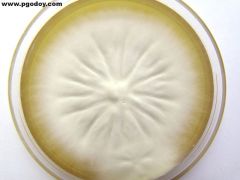
|
Microsporum canis (dermatophyte) |
|
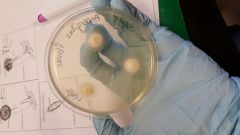
|
Aspergillus flavus |
|
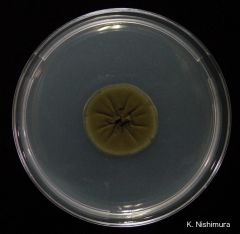
|
Cladosporium spp. (dermatiaceous) |
|
|
Sunburst buff coat with middle orange button |
phiolophora spp. |

